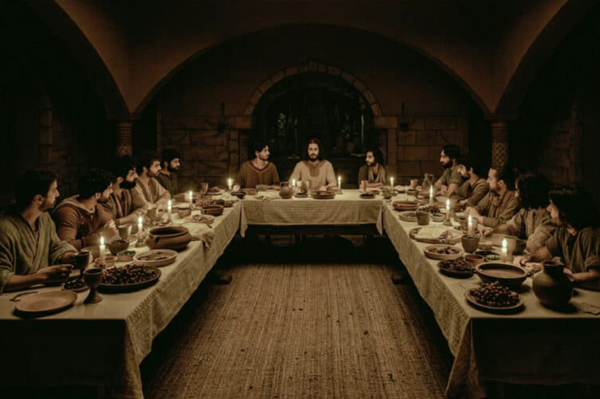Yes, The Midterm Elections Were a Wave; a GOP Tidal Wave

A version of this article originally appeared in Politico Magazine Wednesday evening.
It might not have been 1994 or 2010, but 2014 was a wave all its own: A late-breaking surge that lifted Republicans to some surprisingly strong performances across the country.
Notably, though, the argument for this election being a "wave" has more to do with the House and gubernatorial races, as opposed to the main event, the Republican Senate takeover.
The GOP is likely to bump up its House majority to its highest total since the one it held after the 1928 election, netting at least a dozen additional House seats.
The Republicans won some Democratic-leaning territory in places like Illinois and New York that might be difficult to hold in future elections, but they also won a few "white whale" conservative districts in places like Georgia, Utah, and West Virginia that they should have little trouble keeping for the foreseeable future.
The Democrats' road to a future House majority is steep, because their last redoubts in the Deep South and Appalachia are now gone, and they failed to make inroads in the suburban and exurban seats that are now so crucial to them to build a House majority. Previous Democratic House majorities featured a fair number of seats from conservative districts, but those kinds of Democrats are all but extinct now.
It may take an unpopular GOP president running in a midterm — a 2006-style scenario — for the Democrats to have their next real chance to take the House, although Democrats hope a different presidential candidate — Hillary Clinton? — will improve their chances in Appalachia and the South. Spoiler alert: She probably won't. Those culturally conservative areas have been trending away from Democrats and seem unlikely to snap back.
Republicans also had a surprisingly strong night in governors' races, winning statehouses in blue states like Illinois, Massachusetts and — by a big margin — Maryland. Indeed, the win by Republican Larry Hogan over Democratic Lt. Gov. Anthony Brown probably registers as the most surprising outcome of the evening, given that he is only the second Republican to win the governorship there since Spiro Agnew back in 1966, and that he won by a colossal (for a Republican in that state) nine points.
Ultimately, though, the gubernatorial races were a triumph for incumbency: Of 28 incumbents on the general election ballot, it appears that only three will end up losing: Democrat Pat Quinn of Illinois, Republican Tom Corbett of Pennsylvania and (probably) Republican Sean Parnell of Alaska.
In Senate terms, 2014 turned out to be a classic sixth-year itch election, with a loss of probably eight or nine seats for the president's party (depending on the runoff result in Louisiana, and assuming that Republican Dan Sullivan wins in Alaska and Democratic Sen. Mark Warner holds onto his slim lead in Virginia).
Click here to see Table 1.
As this table shows, when you consider all midterms since the beginning of the popularly elected Senate in 1914, the president's party has lost an average of 3.64 seats in Congress' upper chamber in the off year and a median of five. Since World War II, the average has been 3.52 and the median just three.
But in the sixth year of two-term presidencies, the post-war average has been 5.1 seats, the median five. So the 2014 Senate loss by Democrats, with the assumptions laid out earlier, is already eight and will likely be an above-average nine eventually. The Senate picture in the 2014 midterms looks a lot like the sixth year of Ronald Reagan and George W. Bush.
Ultimately, the Republicans capitalized on the very favorable map they were handed this year: They won six of the seven Democratic-held seats in states won by Mitt Romney in 2012 — Alaska, Arkansas, Montana, North Carolina, South Dakota, and West Virginia — and appear poised to sweep all seven with a runoff looming in Louisiana. This is a fine performance for the Republicans, to be sure, but winning in Republican states in a Republican year in a politically polarized era is not necessarily indicative of a wave.
More impressive were the victories by two strong Republican candidates, Cory Gardner in Colorado and Joni Ernst in Iowa, in two states that twice voted for President Obama. For as good as this Senate map is for Republicans, the one coming in 2016 is very good for Democrats. These two purple state victories help provide the buffer the GOP needs to be better able to preserve its Senate majority in 2016. Republicans also almost got an improbable victory in Virginia, where Warner barely leads Ed Gillespie (R). Gillespie, like Ken Cuccinelli (R) in the 2013 Virginia gubernatorial race, closed hard at the end despite being largely abandoned by national Republicans.
It's worth noting that even in this environment Democrats in blue states like Al Franken in Minnesota and Jeff Merkley in Oregon were never seriously threatened, nor was an open seat in Michigan.
Certainly, it is important that the GOP finally beat more than two incumbent Democratic senators for the first time since the 1980 election, four total so far: Mark Begich of Alaska, Mark Pryor of Arkansas, Mark Udall of Colorado, and Kay Hagan of North Carolina, with a fifth victory — against Mary Landrieu of Louisiana — right there for the taking.
In a year tilting red because of President Obama's unpopularity, the GOP was also able to save both of its threatened seats, in Georgia and Kansas. The Peach State's David Perdue (R) ended up avoiding a runoff, beating Michelle Nunn (D) by a bigger margin than most expected. A giant and unexpected scare in the Sunflower State broke heavily for incumbent Sen. Pat Roberts, who ended up winning in something of a rout over independent Greg Orman. We are reminded again: partisanship can overcome a lot, including a listless candidate like Roberts who only came on at the end thanks to shock therapy applied by national GOP operatives.
While a few Republican poohbahs might disagree, the Senate picture was something of a set-up for the GOP. Republicans were defending only 15 seats to the Democrats' 21. The 2014 midterm was concentrated in smaller states with a Republican cast; little more than half the American population lived in states with a Senate race this year because California, Florida, New York, Ohio, and Pennsylvania, among other larger states, sat out this cycle. (The two other Senate classes have around three-quarters of Americans participating, and the lineup of states is more favorable to Democrats on paper.)
The Republicans were also greatly assisted by the retirement of three Democratic incumbents in Republican-leaning states — Sens. Jay Rockefeller of West Virginia, Max Baucus of Montana, and Tim Johnson of South Dakota — and they virtually inherited these seats. A fourth retirement, by Sen. Tom Harkin of Iowa, also helped the GOP to win that seat.
The Crystal Ball has asserted all year long that the map and the math of 2014 made Republicans the clear favorites to capture the Senate, and now they have done so. Nothing is inevitable in politics, but this outcome was a good bet all along.
Equally worth emphasizing is that, for all the restorative value to the GOP of the Senate's recapture, this year's voting pattern means little for the 2016 presidential election. For instance, Colorado, Iowa, and North Carolina will still be purple states up for grabs in 2016, regardless of the Senate winners in 2014.
Over the coming weeks, there's going to be a lot of happy talk about President Obama and the newly empowered Republicans coming together over the next two years to seriously address the nation's problems. We'll believe it when we see it: Gridlock has defined Washington for the past four years, and given the ideological divide between the parties, it seems a safe bet that it will continue.
Also, the Republicans have seen what President Obama's unpopularity has done for them in two big midterm victories, and a weak Obama would be a drag on any Democratic presidential nominee. In other words, it is in the Republicans' political interest for Obama to remain unpopular, which is another barrier to deal making in Washington.
After all, the next campaign is right around the corner, like–tomorrow.






















